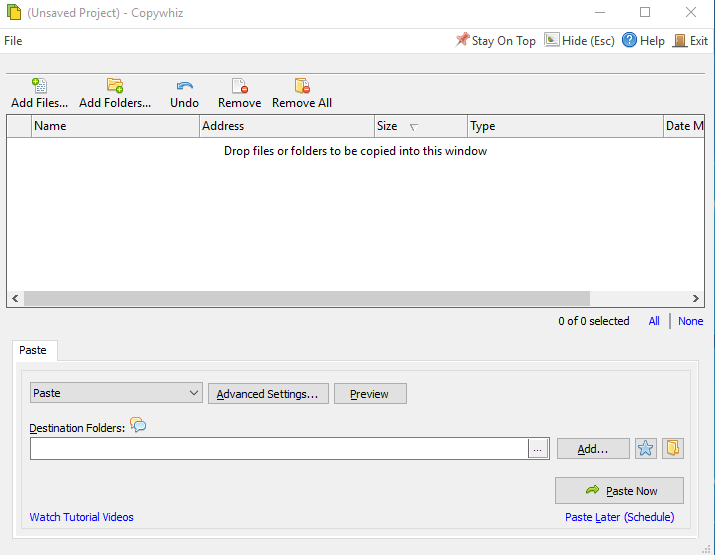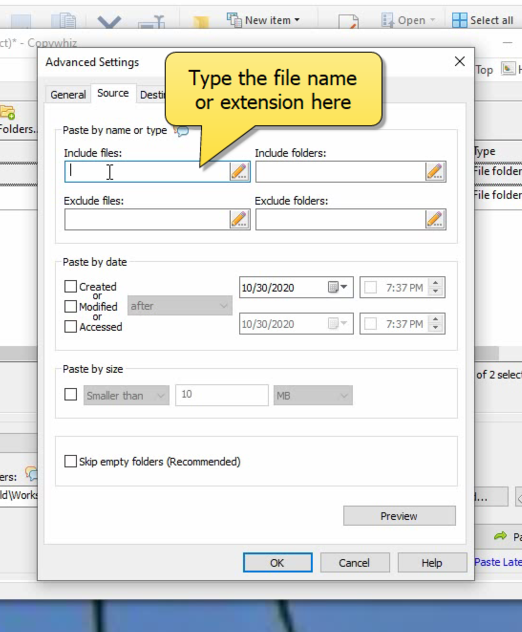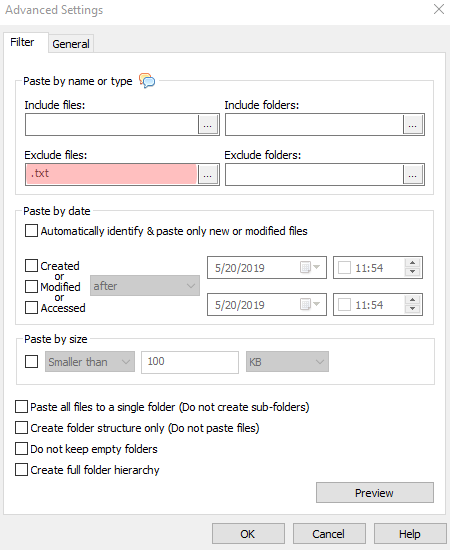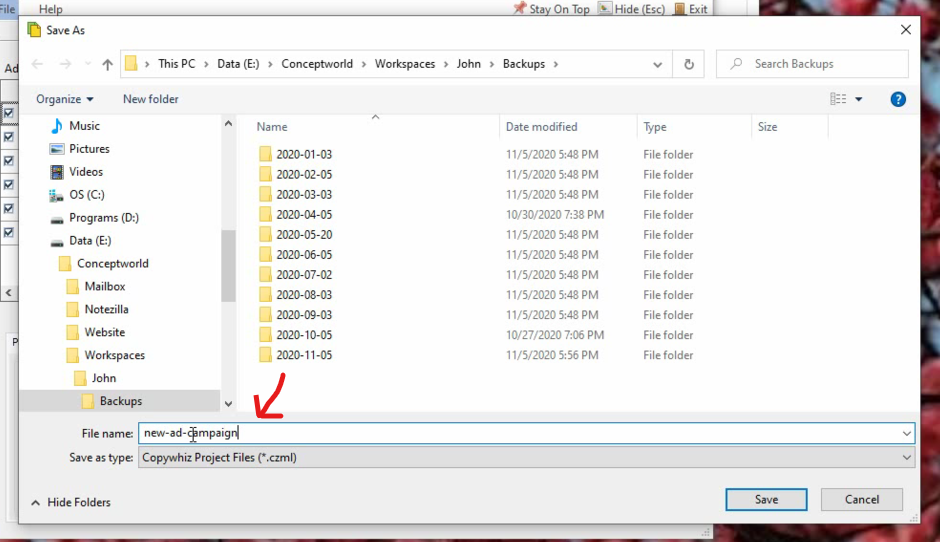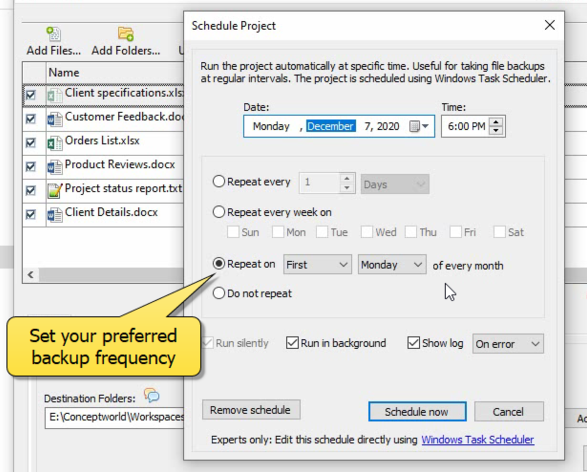Ensuring the integrity of files when copying them from one location to another is crucial to avoid data corruption or loss. In this blog post, we will walk you through step-by-step guides on using these tools Copywhiz and Robocopy to verify data integrity and compare their features.
What is Copywhiz?
Copywhiz enhances your file-copy experience by letting you to have more flexibility & control over the file copying and backup process.
Here is how Copywhiz makes file copying a breeze:
- Copy only new or modified files
- Easily pick files by name, extension, folder etc from bunch of folders
- Automatically organize files based on file attributes and metadata
- Copy files to multiple folders/computers
- Copy files from multiple folders and paste them at once
- Sync files between source and destination
- Pick files from multiple folders and compress in single .zip file
- Schedule file backups
- Verify copied files for data integrity
- Retain security attributes of files & folders (ownership/user access)
- Several more hidden nuggets designed to make your file-copy task easier.
Below we have a video describing this feature:
Video Transcription:
- As shown in the video, Right click and copy using Copywhiz.
- Go to the destination folder, right click and choose Copywhiz Paste Advanced.
- In the General Tab, choose the verify files option.
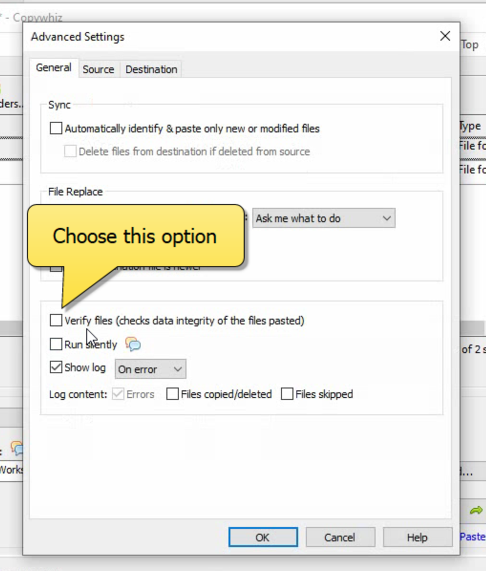
- Click on paste now.
Using Robocopy:
Robocopy (Robust File Copy) is a powerful command-line tool built into Windows that supports data integrity verification.
Step-by-Step Guide:
- Open Command Prompt:
- Press
Win + R, typecmd, and press Enter.
- Press
- Prepare the Command:
- Use the following syntax to copy files with integrity checks:
robocopy <source> <destination> /MIR /COPY:DAT /R:3 /W:5 /ZB /V /FP /NFL /NDL /XD temp /XF *.tmp /DCOPY:TReplace<source>and<destination>with your source and destination file paths.
- Use the following syntax to copy files with integrity checks:
- Key Parameters:
/COPY:DAT: Copies data, attributes, and timestamps./ZB: Ensures restartable mode or backup mode if access is denied./V: Produces verbose output to verify actions./FP: Displays full file path for logs.
- Verify Logs:
- Robocopy generates detailed logs, highlighting copied files, skipped files, and errors.
- Use the
/LOG:<filename>option to save logs for later review.
- Confirm File Integrity:
- The
/MIRoption mirrors the source and destination, ensuring all files are copied. Compare file sizes and timestamps in the logs to confirm integrity.
- The
Conclusion
Learn more about Copywhiz. Download the free trial from here.
For short tutorial videos, Check out this page.
Subscribe to our YouTube channel for interesting videos.
Check out our other cool products.
Have a good day!



